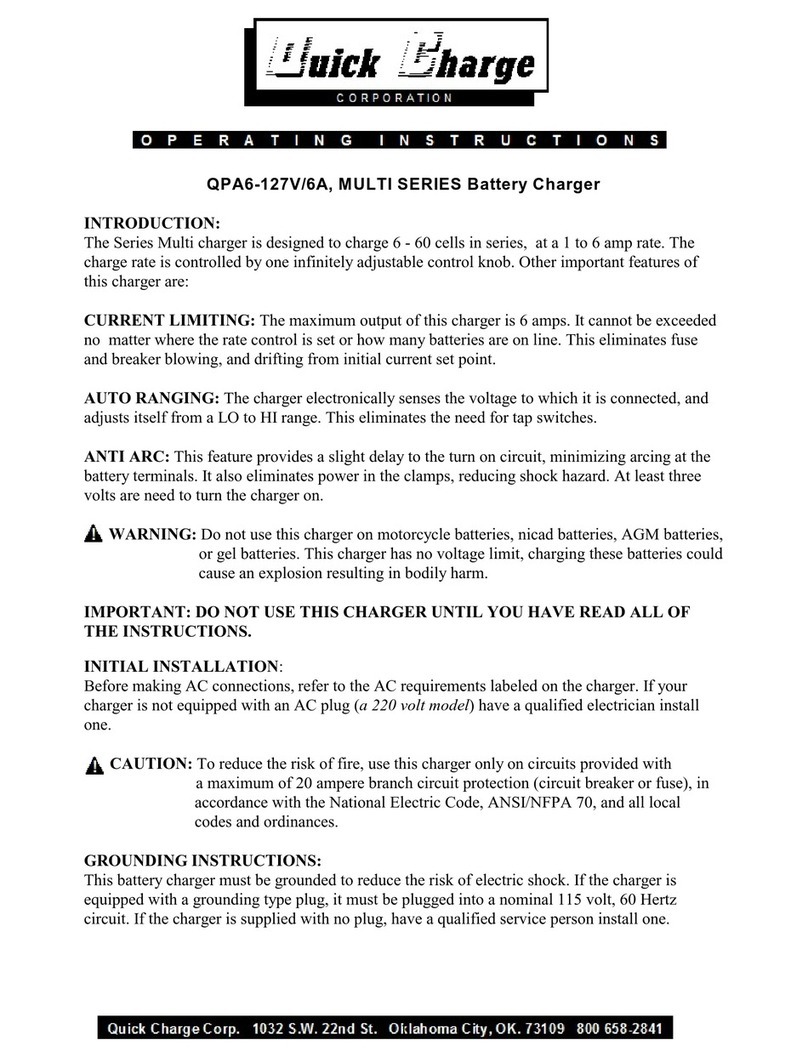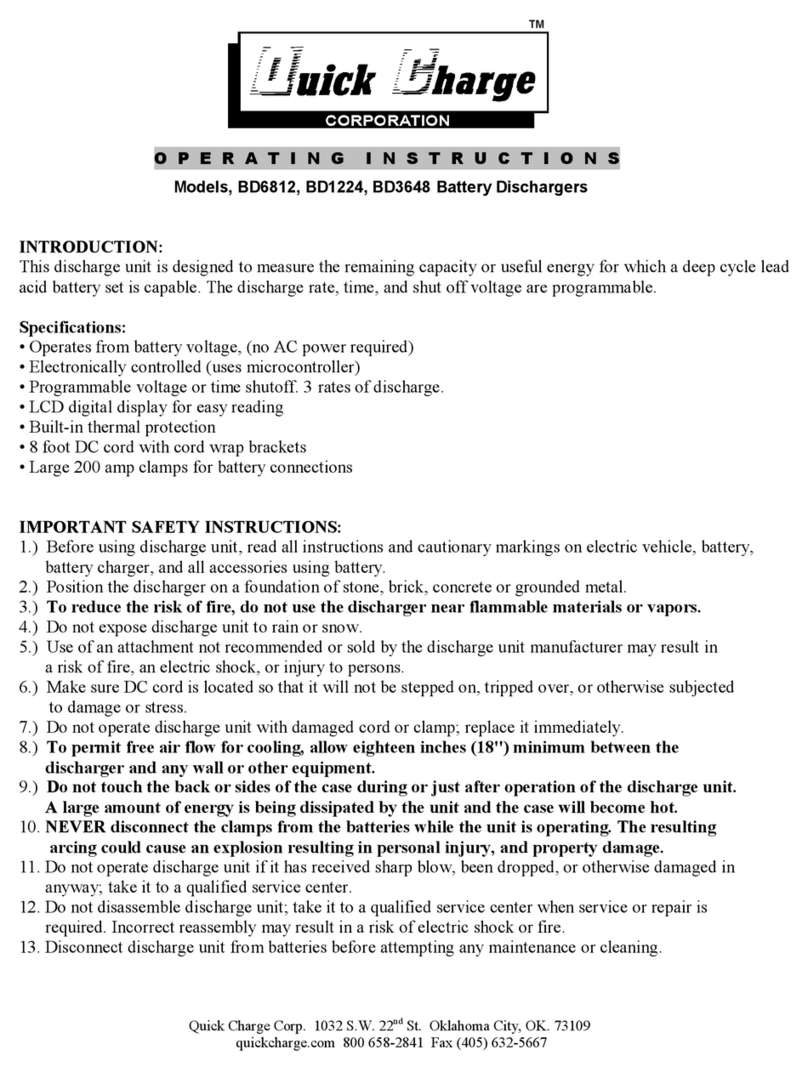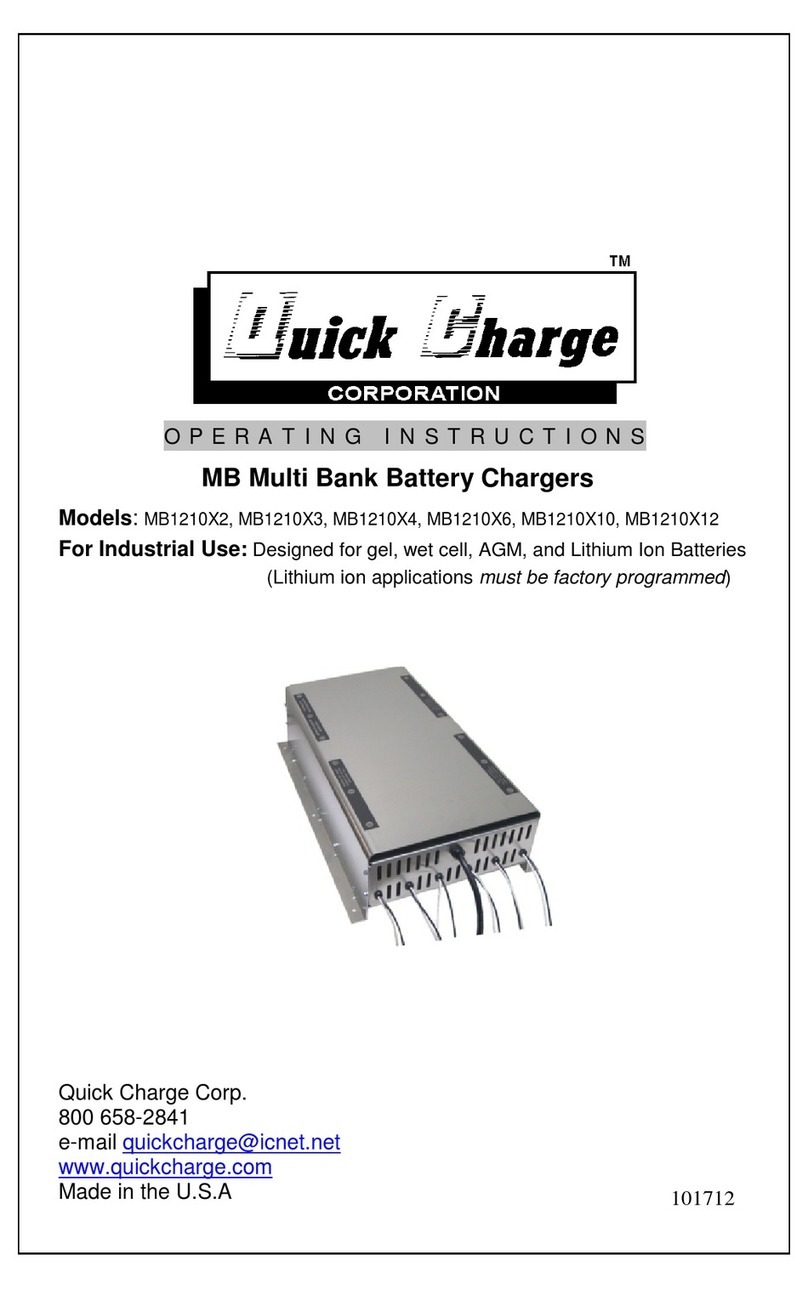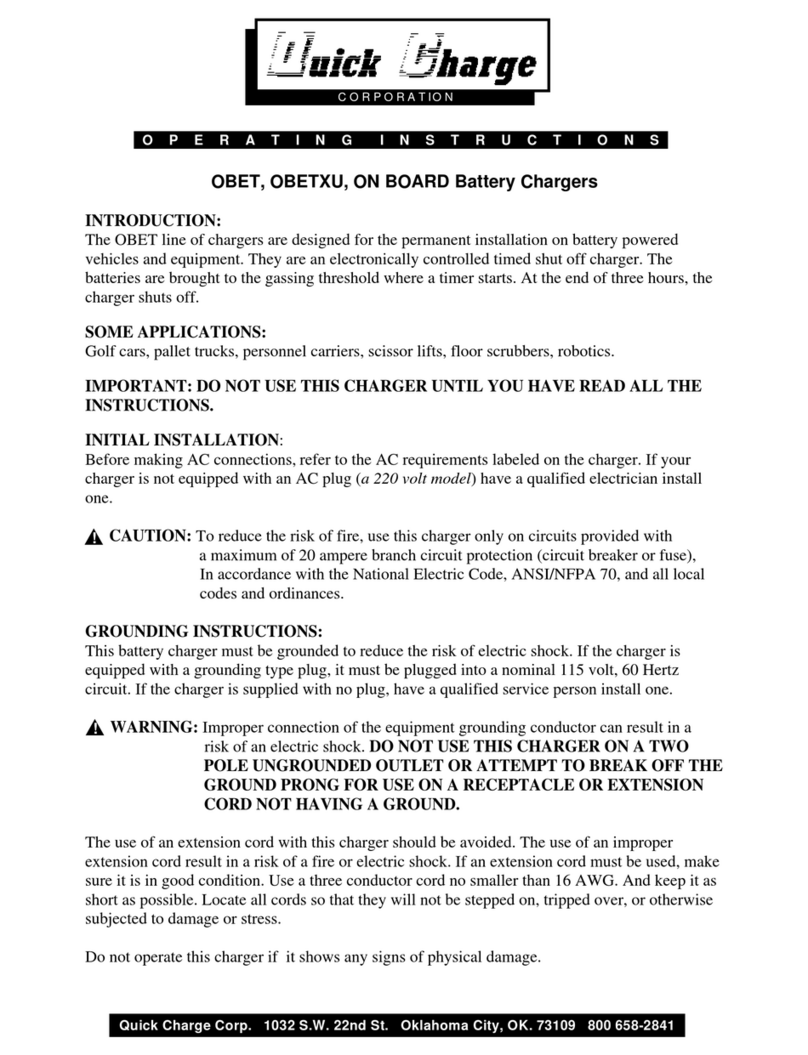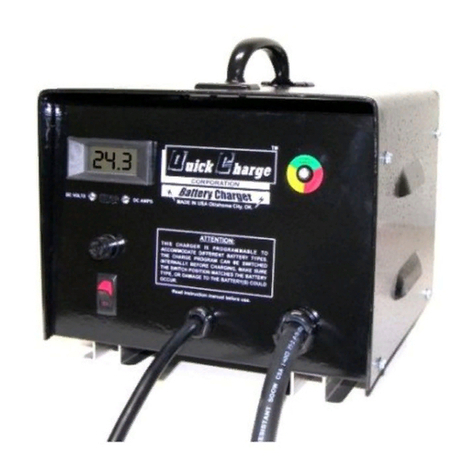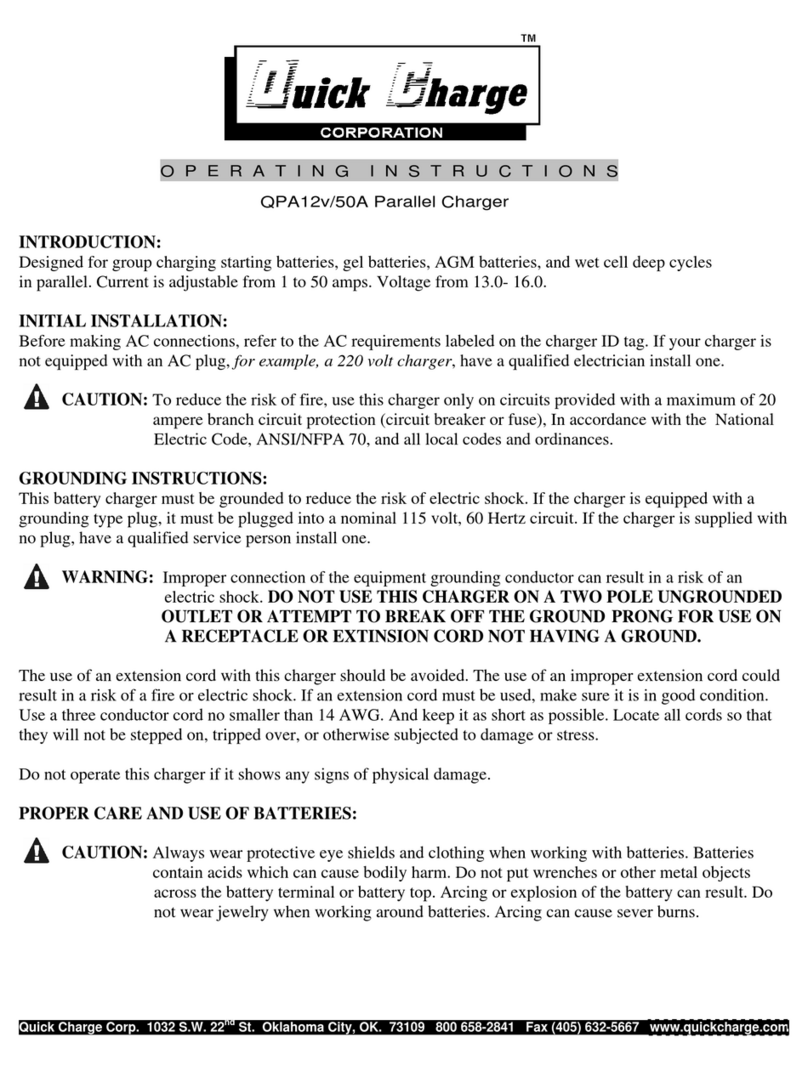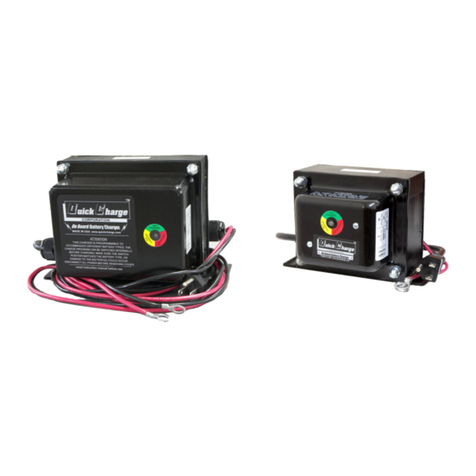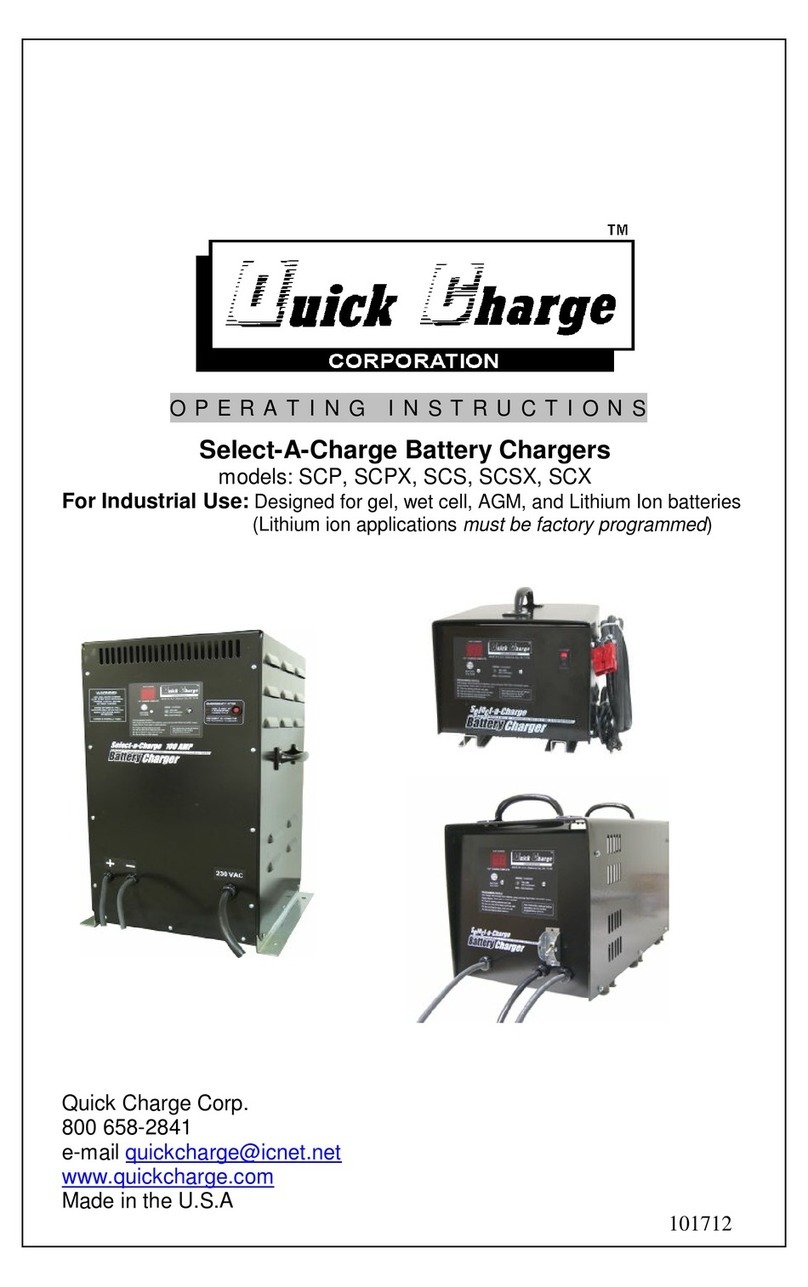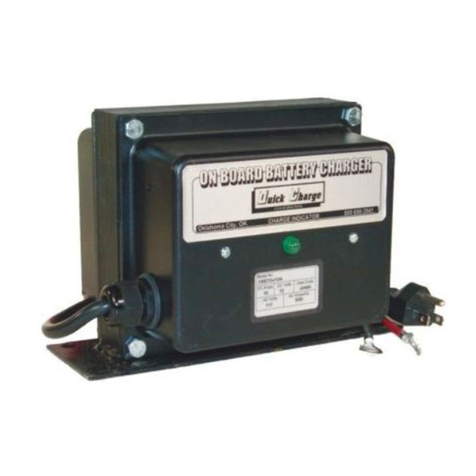
QUICK CHARGE OBE Battery Chargers
“LIMITED WARRANTY”
Quick Charge Corporation warrants the OBE line of chargers for three (3) years from the date of
purchase. After the warranty period, chargers returned to the factory for repair will be charged a
minimum rate of $25.00. Charger will be returned, freight and repair charges, C.O.D. unless other
arrangements have been made. This warranty covers all defects in manufacture and
performance, provided the unit is operated in compliance with manufacture’s operating
instructions.
For repairs to be made at the Quick Charge factory, a charger and/or component(s) should be
sent, freight prepaid to Quick Charge at:
Quick Charge Corp.
1032 S.W. 22nd St.
Oklahoma City, OK. 73109
Quick Charge, will at it’s option, repair or replace the charger or component in question. The
repaired item will then be returned, freight prepaid by Quick Charge. This warranty is void if the
charger or component have been altered, changed, or repaired by anyone not authorized by
Quick Charge, or if the charger or component, have been subjected to misuse, negligence, or
harsh environmental conditions. (Except those chargers designed for such conditions)
If returning the charger to the factory is not practical, replacement parts may be shipped to the
customer for field repair at no charge. On parts such as circuit boards, the customer will be
required to return the board suspected to be defective to Quick Charge, freight prepaid. If such
defective parts are not returned, the customer will be invoiced for the repair parts. Field repairs
are made at the user’s own risk. “Authorization” by Quick Charge to repair refers to maintaining
the warranty only. Quick Charge assumes no responsibility or liability for field servicing, and shall
not be responsible for incurred travel or labor charges.
Quick Charge corporation shall not in any event be liable for the cost of any special, indirect or
consequential damages to anyone, product or thing. This warranty is in lieu of all other warranties
expressed or implied. Quick Charge neither assumes nor authorizes any representative or other
person to assume for us any liability in connection with the sale of this product
